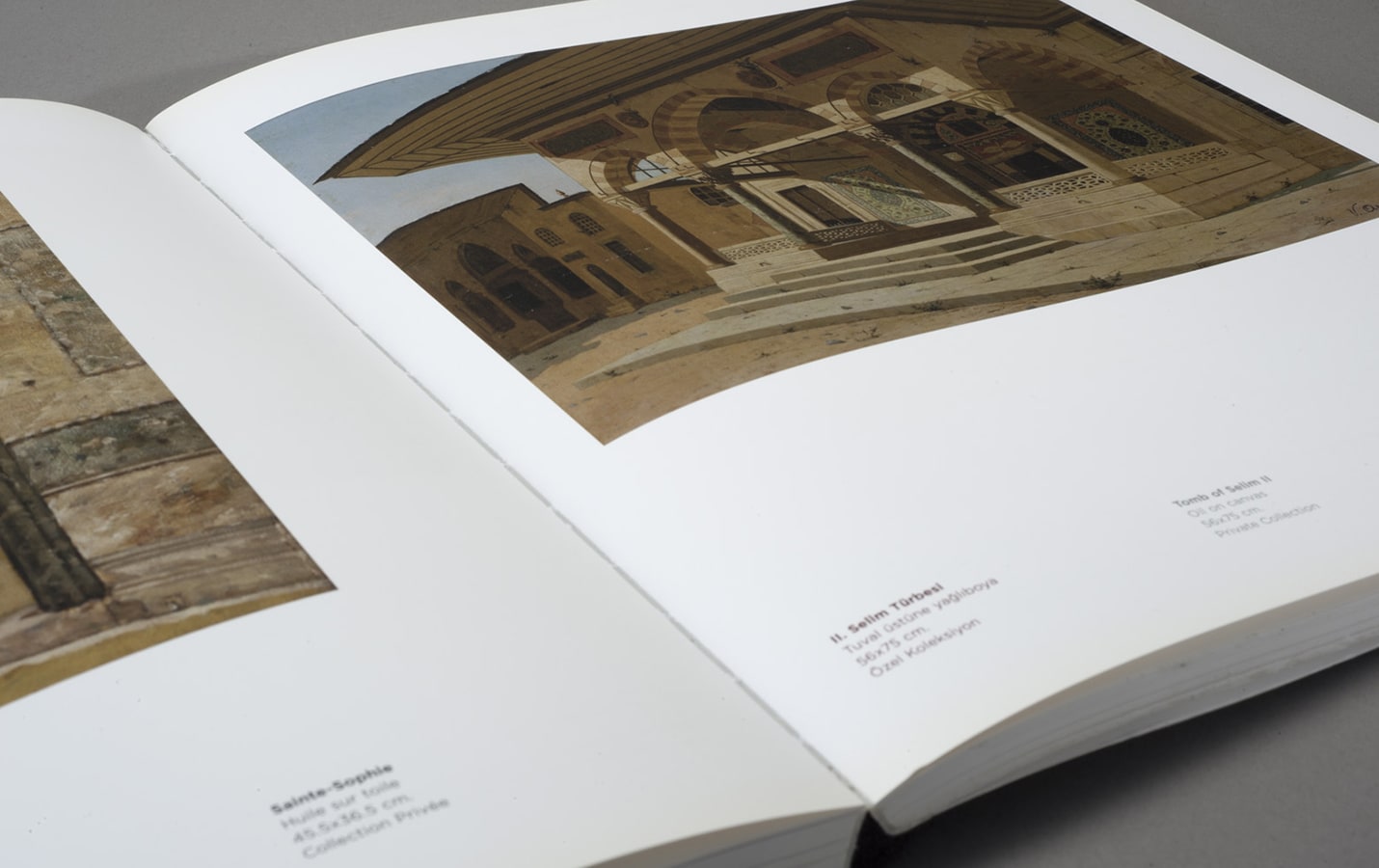February 10 - April 26, 2009
Garb i ş tiyâk-ı fikre açık bir ufuk, ve sen
Şark’ın bu ufka ilk açılan bir derîçesi!
Tevfik Fikret
Tevfik Fikret's famous couplet, which compares the West to a horizon beckoning to those who long for intellectual pursuits and calls Mekteb-i Sultani the East's first window opening onto that horizon, is an explicit expression of the affirmation of the notion of modernization among the Ottomans and of a yearning for Western civilization.
Opened on 1st September 1868, upon the orders of Sultan Abdülaziz, while Mekteb-i Sultani was conceived of as a training ground for bureaucrats who would staff the state's newly-designed agencies, it was thought that its students should be inculcated in the ways of international diplomacy and European culture. With this idea in mind, among the lessons included in the curriculum, was European art and literature and consequently major artists emerged both from Ottoman-period Mekteb-i Sultani and from Republican-period Galatasaray Lycée.
Because of the role that they played in the initial formative stage of painting among the Ottomans, the art instruction provided at Mekteb-i Sultani, the instructors and their artistic personalities, as well as the artists who studied there are all matters of importance. The primary aim of this exhibition was to draw attention to an attitude towards education which, for over a century in the years from 1868 to 1968, upheld strict standards of quality, fostered an undying love of art from generation to generation, and transformed that love into professionalism. A significant number of the youths who became familiar with art at Galatasaray went on to study at the Fine Arts Academy, was as much due to the influence of French language and culture, as to the love of art that they had acquired there. The majority of those went to Paris to further develop their artistic abilities. For such individuals, the Galatasaray Lycée, the Academy of Fine Arts, and Paris represented three important stages of their lives as artists.
When the works of Galatasaray graduates were chosen for exhibition, attention was given as much as possible to examples of their impressions of İstanbul and Paris in order to emphasize their sojourns in the two cities. The leading names in the history of Turkish art and their works reveal the importance of the role that the institution played in Turkey’s artistic environment and the value of the contributions that it made during the course of a century from Mekteb-i Sultani to Galatasaray Lycée. Modeled after the French educational system to meet the demands of a society in process of modernization, the curriculum of Mekteb-i Sultani was prepared under the supervision of Victor Duruy, the innovative French Education Minister of the period. From the organization of instruction to the structuring of classrooms and the selection of teachers, it was made sure that the lycée to be established was on a par with the best schools of Europe. The curriculum applied at the school was diverse enough to compensate for the concrete needs of a modern society. Painting instruction, to which Duruy paid significant attention, was based upon two solid foundations with one leading towards positive sciences the other towards plastic arts.
In the second half of the 19th century, Paris was the Mecca of art; receiving art education in Paris was a form of worship for a number of travelling artists gravitating towards the city from the East and the West. The education system applied at Mekteb-i Sultani (The Imperial School), which was founded in the same period, once again testified to France’s dominance over civilization, culture and art, and consequently led to a more profound veneration of Paris in the eyes of young Ottoman artists. It is, therefore, not surprising that a significant number of students, who were first introduced to and developed an interest for the art of painting at the “Sultan’s School” and further broadened this interest at Sanayi-i Nefise (Academy of Fine Arts), flocked to the Parisian studios immediately after graduation. Following the proclamation of the Republic, the frequency of these voyages would substantially increase and the students would familiarize themselves with Paris through the support of the state. After World War II, artists trained at the liberal studio facilities provided for talented students at Galatasaray Lycée, transformed not only the visage of the voyages to Paris, but of art in Turkey as well. Disengaged from formality, art in this period stood on the threshold of a local modernism.
Artists: Celal Esad Arseven, Viçen Arslanyan, Haşmet Akal, Avni Arbaş, Saime Belir, Nurullah Berk, Cihat Burak, Şevket Dağ, Nejad Devrim, Halil Dikmen, Feyhaman Duran, Tevfik Fikret, Hamit Görele, Yavuz Görey, Oktay Günday, François Claude Hayette, Namık İsmail, Cem Şakir Kabaağaç, Fethi Karakaş, Fikret Kolverdi, Fikret Mualla, Ahmed Münip, Muallim Şevket, Selim Turan, Eşref Üren, Adnan Varınca, Sami Yetik, Kemal Zeren
Exhibition Catalogue

Opened on 1 September 1868 upon the orders of Sultan Abdülaziz, while Mekteb-i Sultani was conceived as a training ground for bureaucrats who would staff the state's newly-designed agencies, it...

Félix Ziem is accepted as one of the well-known artists of the romantic landscape painting, and has been followed closely by art lovers and collectors of all periods since. He had a profound influence on generations of artists after him, and was the first artist whose works were acquired by the Louvre while he was still alive.
Tuesday - Saturday 10:00 - 19:00
Friday 10:00 - 22:00
Sunday 12:00 - 18:00
The museum is closed on Mondays.
On Wednesdays, the students can
visit the museum free of admission.
Full ticket: 300 TL
Discounted: 150 TL
Groups: 200 TL (minimum 10 people)